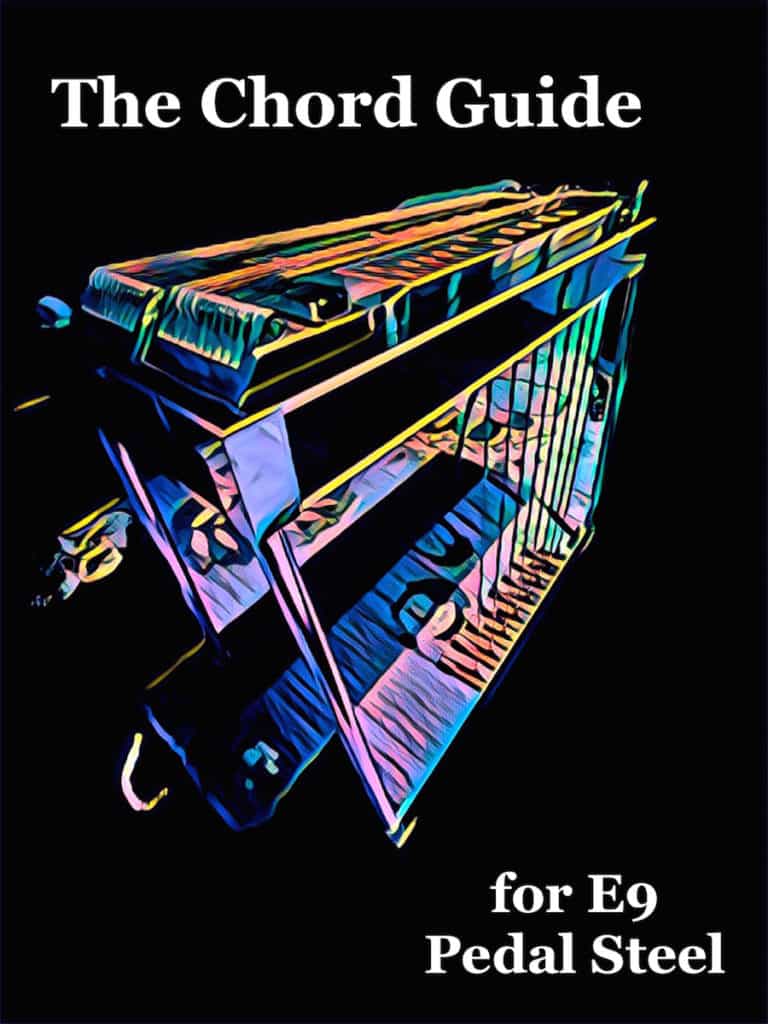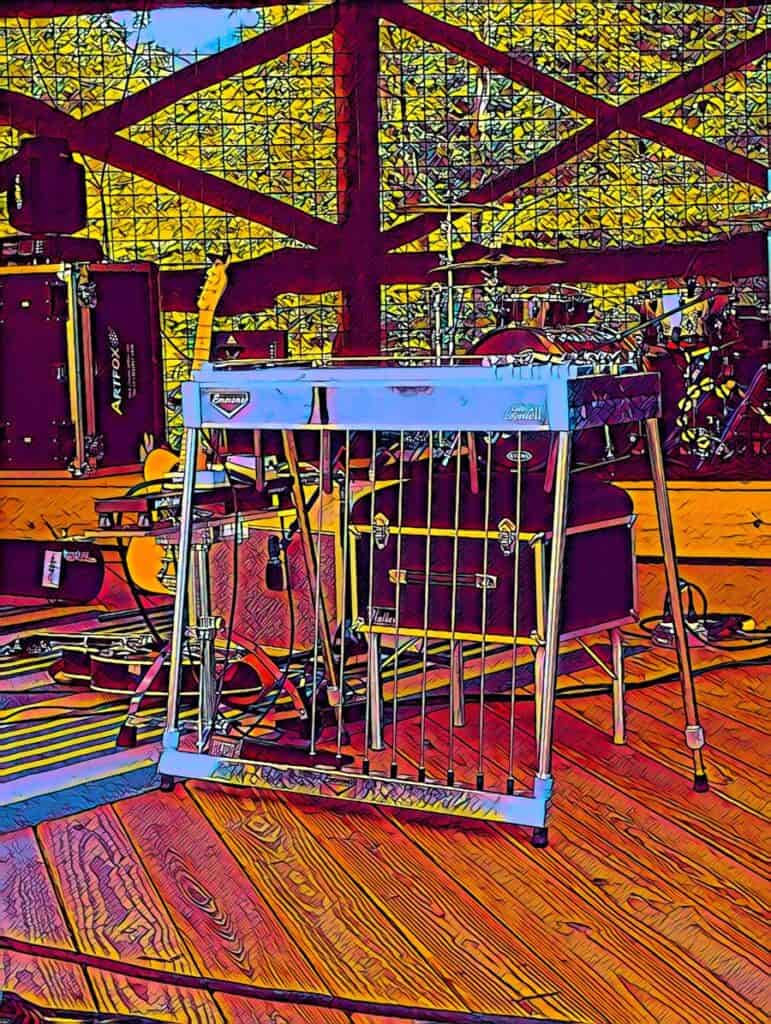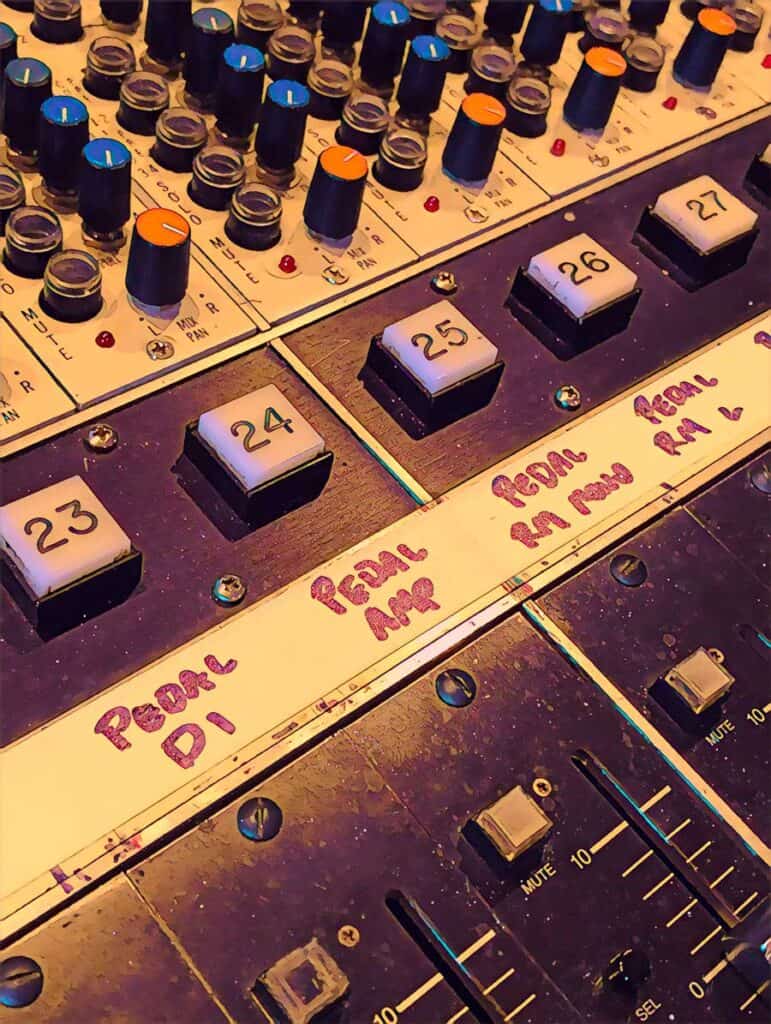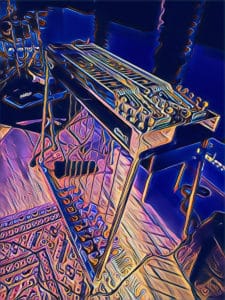As an Amazon Associate Playpedalsteel.com earns from qualifying purchases. This page contains affiliate links.
Pedal steel guitar is not only one of the most expressive instruments, it is also one of the most mechanically complex to play and understand. Most pedal steels have foot pedal and knee lever changes that can be customized and setup specifically, and the resulting tuning and mechanical setup is usually called a copedent.
If you take a look at various players’ copedents you’ll often find that they’re slightly different, even though most players use a somewhat standard setup. Most E9 pedal steel guitars use either an Emmons setup or a Day setup, which are copedents that have become popular among players over the years.
Most pedal steels that are manufactured nowadays will come with standard copedents, unless the buyer specifies otherwise. Many players will begin learning on a standard setup pedal steel guitar, and then add custom changes over time that alter their original copedent.
Let’s learn more about pedal steel copedents, and how they affect the way pedal steel guitars are played…
What is A Copedent?
A copedent is the way a pedal steel guitar’s pedal and lever changes are setup and tuned. Each pedal or lever that is in use will affect certain strings, and how their tuning changes when the pedal or lever is engaged.
If you play a note on a string without using any pedals or levers, and then engage a pedal or lever that alters that strings’ pitch, then you can learn exactly how a pedal or lever is affecting the pitch of that string.
Using (or creating) a copedent chart for a pedal steel can be a great way to quickly and efficiently understand what exact pedal and lever changes there are on the instrument.
Copedent Charts
A copedent chart is a way to learn more about the tuning and setup of a particular pedal steel and its necks or tunings. Most charts display the open strings’ tunings, the pedals and knee levers on the pedal steel (which have letters or numbers usually to designate their use), and the amount of pitch that is raised or lowered on particular strings by using particular pedals and levers.

Taking a look at copedent charts can be a great way to learn more about what copedents various influential players have used over the years, gain more insight as to how the instrument and its tunings work, and can also be a great way to understand exactly how a particular pedal steel is set up and tuned.
Here’s a page that shows a detailed look at the copedents of some influential pedal steel players over the years.
Most pedal steel players will have some adjustments and changes to their copedent over their career, whether subtle or not. It can be common for a player to get used to playing a certain copedent, and then add more changes to their instrument with extra pedals, levers, or adjustments.
How To Find A Pedal Steel’s Copedent
Most pedal steel guitars will come with a copedent chart when they are manufactured. However, if you buy a used one (or are interested in determining what a pedal steel’s copedent is), then you may need to make one yourself or memorize it.
To do this, you simply need to understand what each pedal and knee lever is doing to each string that it affects on the pedal steel. After you determine a particular change, then mark it on the copedent chart and finish this process with all of the pedal steel guitar’s foot pedals and knee levers.
Some players will make copedent charts for some of their particular instruments, and will share these online or in-person with anyone who is interested. These players are likely to include this chart with their pedal steel if they sell it to a new player.
What’s the Main Difference Between Copedents
Most copedents are similar, especially in regards to the C6 neck. However, many E9th copedents can be slightly different than just standard Emmons or Day setups. If a pedal steel has nine knee levers for instance, there are going to be many knee lever changes that are a part of the copedent, which aren’t found as often on other pedal steels.
If you’re looking at or determining the copedent of a pedal steel, it is usually easiest to first determine if the E9 neck is an Emmons or Day setup in regards to the first three foot pedals. After this, determine what the four main knee levers do to the various strings (for Emmons setup, usually the left knee levers affect the open E strings of the tuning).
After this is determined for the E9 neck, you may find that the neck’s tuning has some extra foot pedals or knee levers that are affecting certain strings when activated. Also, keep in mind that what is usually a standard change on most pedal steels may alter some other strings simulataneously (or slightly differently) than this change usually does.
Highly Customized Copedents
Besides the mechanical expertise involved, there are relatively limitless copedent options for pedal steel guitars. You’ll likely find that the most highly customized copedents are the result of particular preferences of players, or maybe a player comes from a different playing background than most.
As you play pedal steel guitar, you’ll come across instances where you’ll wish you had a pedal or lever to make a certain change that you’re trying to achieve in your playing. This may be a time you decide to begin adding more changes to your pedal steel guitar, if they’re important enough to you.
Conclusion
Discussing copedents with other pedal steel players is a definite sign of how niche the instrument truly is — anyone else listening is likely to think of it as rocket science. However, a pedal steel’s copedent is proof of just how unique and versatile the instrument is, even mechanically.
To have the option to setup, customize, and change copedents on pedal steels can be convenient, or feel like a never-ending hobby. You’ll likely find that there are endless options for customizing and tweaking your changes, and that there is always a new novel change to replace a once repetitive and useless one.
Thanks for checking out this page, hope it is helpful and makes playing more enjoyable! If you’re interested in diving deeper into playing E9 pedal steel, check out these resources and guides…
The Chord Guide for E9 Pedal Steel (E-Book, Digital Download)

Learn the chords on the E9 neck in a way that makes playing simple and enjoyable…
- Almost Every Chord You’ll Ever Need for E9
- Intuitive and Easy to Use
- Make Use of Pedal and Lever Combinations
- Example Tabs of Chord Movements
- Easily Utilize the Nashville Number System
- Great For Any Key and Style of Music
Includes a bonus section of over a hundred pages of extra chord charts, key references, and more!
You may also like…
200 Country Riffs & Licks for E9 Pedal Steel
Add these country licks to your playing repertoire…
- Easy to Read Format
- Includes Rhythmic Notation
- Playing Over Chord Changes
- Great for Country, Alt-Country, & Honky-Tonk Styles


The Scale Book for E9 Pedal Steel
Over 1,000 Pages with Tabs and Diagrams!
- Easy to Use Reference for Practicing
- All Major and Minor Pentatonic Scales, Modes, Major Scales
- All Keys, and Covers the Fretboard
- Includes Pockets of Scales

Harmonized 6ths
- Hundreds of Riffs, Licks, and More
- How To Play Sixth Intervals on the E9 Neck – Over Any Chord
- Utilizes The Pedals and Knee Levers

Right Hand Picking & Blocking
- An In-Depth Guide to Picking and Blocking
- Perfect Your Technique
- Includes Graphics, Illustrations, & Practice Exercises
